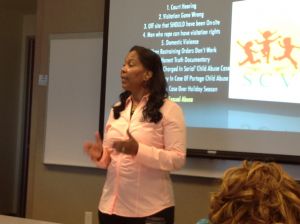Efforts to coin the month of November as Family Court Awareness Month received recognition and endorsements from California Congresswoman Judy Chu, Senator Susan Rubio and Assemblywoman Blanca Rubio.
Efforts, compassion and commitment by Sandy Ross received recognition by the Los Angeles County Domestic Violence Council and Peace over Violence. Sandy was instrumental in getting “Piqui’s” Law passed. Governor Newsome signed it into Law, Friday, October 13th. I guess bad luck turned out to be ‘Good’.
|
Every November is #FamilyCourtAwarenessMonth with the goal of raising awareness on systemic issues that are placing children in harm’s way in our current Family Court System and sharing common sense solutions in our local communities. One of many ways we accomplish this is through Proclamations in our local, county and state governments declaring November as Family Court Awareness Month. For info on getting a Proclamation from your city contact Sandy Ross (FCAM Facebook group). #kidsmatter #safecustodymatters
|
* The Crisis *
|
Throughout the world, unhealthy parents are using family court systems and their children to continue post-separation abuse with a severe lack of accountability — and safe parents are being punished (even losing custody) in their attempts to protect themselves and their children from abuse. It is estimated that tens of thousands of children in the U.S. alone are being court-ordered into the custody of an abusive parent.
|
* The Potential *
|
Judges in our Family Court systems around the globe hold an incredible about of potential in their hands to cultivate health and healing for the children throughout the United States and globe. Our purpose is to raise awareness and develop pathways within our local communities to address the systemic issues that are placing children in harm’s way.
|


Follow Us!